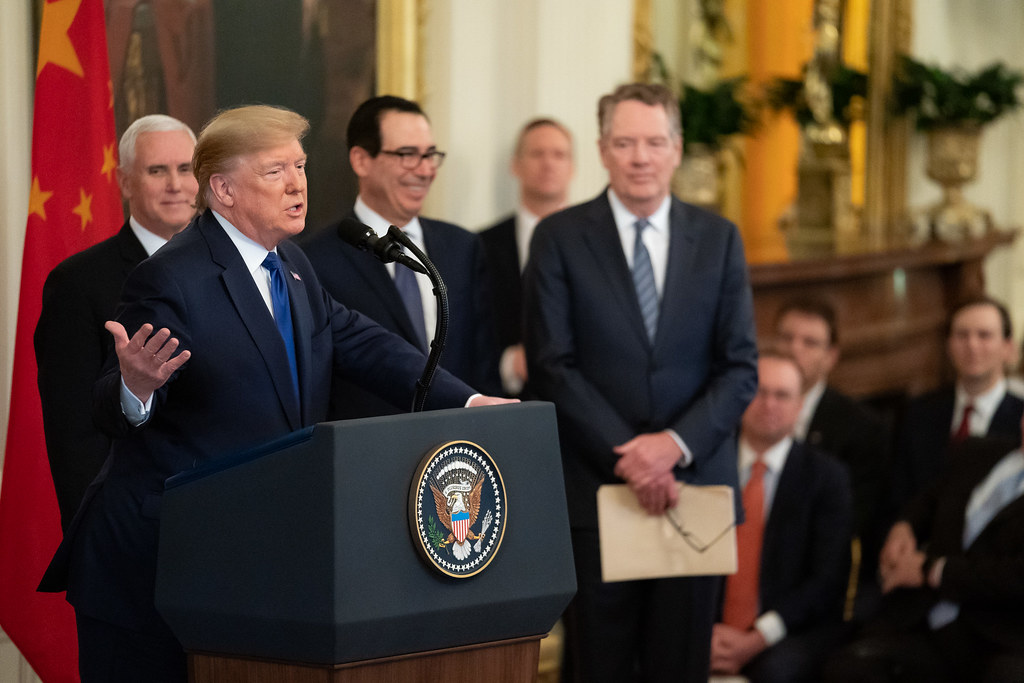Key Takeaways
• Trump’s trade deals claim of $15 trillion is contradicted by court filings.
• Treasury Secretary Scott Bessent says only $2.35 trillion is truly promised.
• Lower courts ruled Trump’s tariff scheme illegal under existing law.
• The Supreme Court may soon decide the fate of his tariff power.
• If agreements fail, the economy could face serious fallou
Introduction
President Trump often boasts about his trade deals, claiming they brought $15 trillion in foreign investment. Yet recent court documents show a much smaller number. In fact, Treasury Secretary Scott Bessent told the Supreme Court that only $2.35 trillion in investments and purchases are currently on paper. This gap raises questions about whether Trump’s trade deals are real or just hype.
The Legal Fight Over Tariffs
Trump imposed tariffs under the International Emergency Economic Powers Act. However, the U.S. Court of Appeals said that law does not give him authority to set such tariffs. Consequently, several lower courts declared his tariff scheme illegal and invalid. Now, the Trump administration is rushing to the Supreme Court. They hope to overturn those rulings and keep the tariffs in place.
The Administration’s Defense
To defend the tariffs, Solicitor General John Sauer filed a brief. Treasury Secretary Bessent supported the case by listing specific commitments from foreign partners. This filing aimed to show that the tariffs encouraged other nations to promise big buys and investments in the U.S.
What Bessent Says About Trade Deals
According to Bessent, existing frameworks include clear investment promises:
• European Union agreed to $750 billion in energy purchases.
• European Union agreed to $600 billion in investments.
• Japan and South Korea together promised about $1 trillion.
When you add these numbers, they total $2.35 trillion. That is far less than Trump’s repeated boast of $15 trillion from his trade deals.
Why the Numbers Matter
First, accurate figures help judges see the real stakes. If investments truly reach trillions, reversing the tariffs might hit the U.S. economy hard. However, if the numbers are smaller, the court might view the tariffs as unnecessary. Second, public trust hinges on honesty. When leaders distort facts, people grow skeptical. Thus, these conflicting numbers could affect both legal outcomes and public opinion.
Trump’s Claims Versus Court Records
President Trump has repeatedly claimed that his trade deals unlocked massive capital. He promised that foreign countries would funnel $15 trillion into American projects. Likewise, he often linked these figures to success in reducing tariffs elsewhere. Yet, the administration’s own filings list only $2.35 trillion worth of commitments. In short, Bessent’s statements suggest the president has been overselling his achievements on trade deals.
Implications for the Supreme Court
The Supreme Court must decide whether the International Emergency Economic Powers Act covers tariff imposition. If justices side with the lower courts, Trump’s tariff powers could end. Moreover, the contrast between Trump’s claims and Bessent’s data may shape the court’s view of presidential overreach. As a result, this case could set a new limit on executive authority.
Potential Economic Fallout
Should the court reverse the frameworks, foreign partners might withdraw their commitments. In that scenario, the U.S. could face contract disputes and demands for repayment. Bessent warned that such unwindings would have “catastrophic” consequences. Nevertheless, with only $2.35 trillion at stake, the real fallout might be more modest than Trump suggests.
The Path Forward
Now, all eyes turn to the Supreme Court. Oral arguments will explore whether this executive overreach oversteps the law. Meanwhile, lawmakers and business leaders await a final ruling. After all, the outcome will shape future trade policy and set legal precedents for presidential power.
Conclusion
The debate over Trump’s trade deals and tariff powers reveals a clash between rhetoric and reality. Although the president touts $15 trillion in investment, official filings list a fraction of that amount. Furthermore, the court battle will test limits on executive authority. Ultimately, the truth behind these trade deals may influence both legal standards and public trust.
Frequently Asked Questions
What did Trump claim about his trade deals?
He often said his trade deals secured $15 trillion in foreign investment and purchases.
How much did Bessent report to the court?
Bessent detailed $2.35 trillion in commitments from the European Union, Japan, and South Korea.
Why did lower courts reject Trump’s tariff scheme?
They ruled that the International Emergency Economic Powers Act did not authorize such tariffs.
What could happen if the Supreme Court overturns the deals?
Foreign partners might withdraw their promises, risking economic and legal complications.

